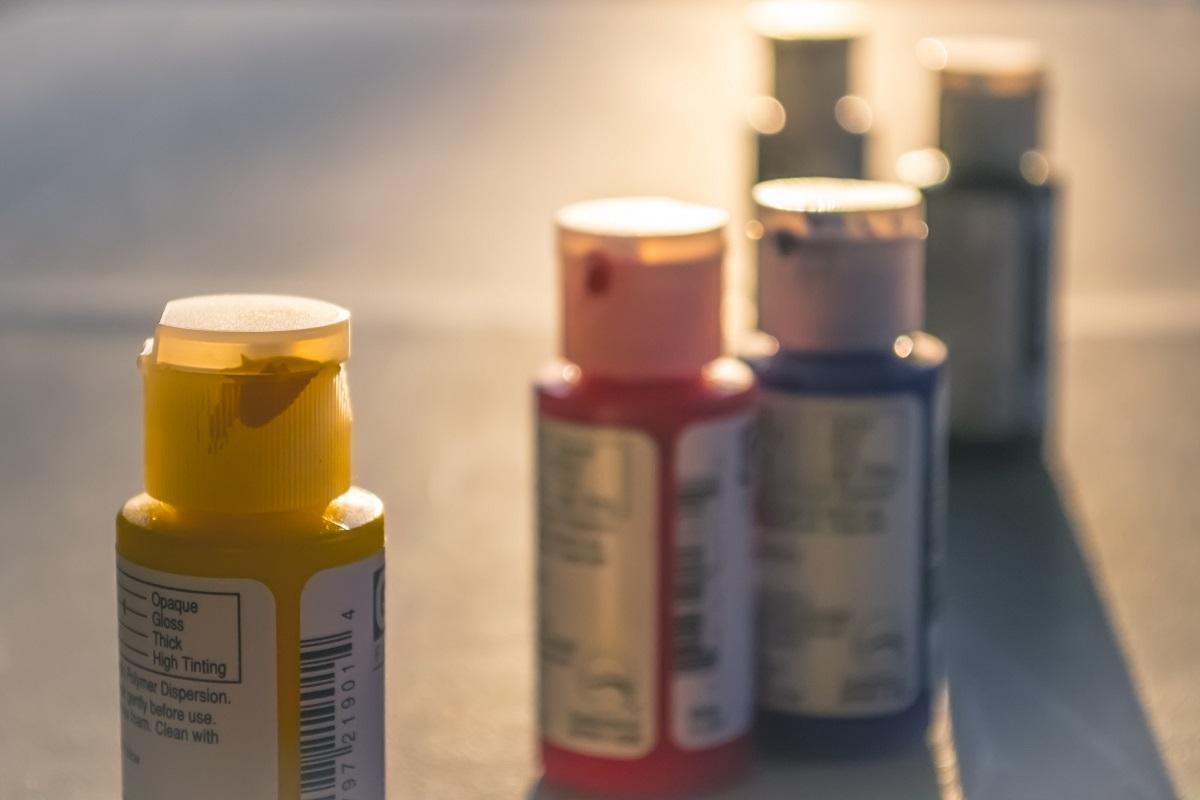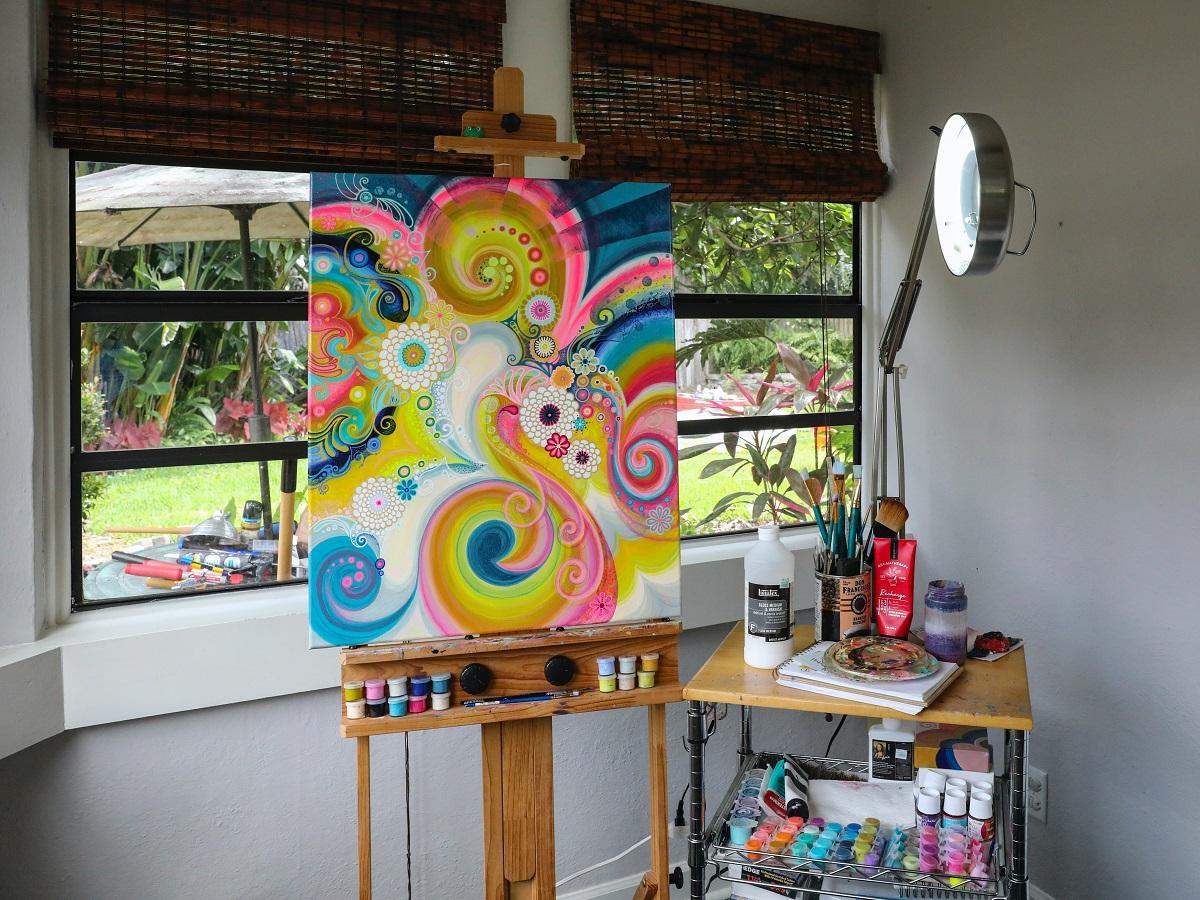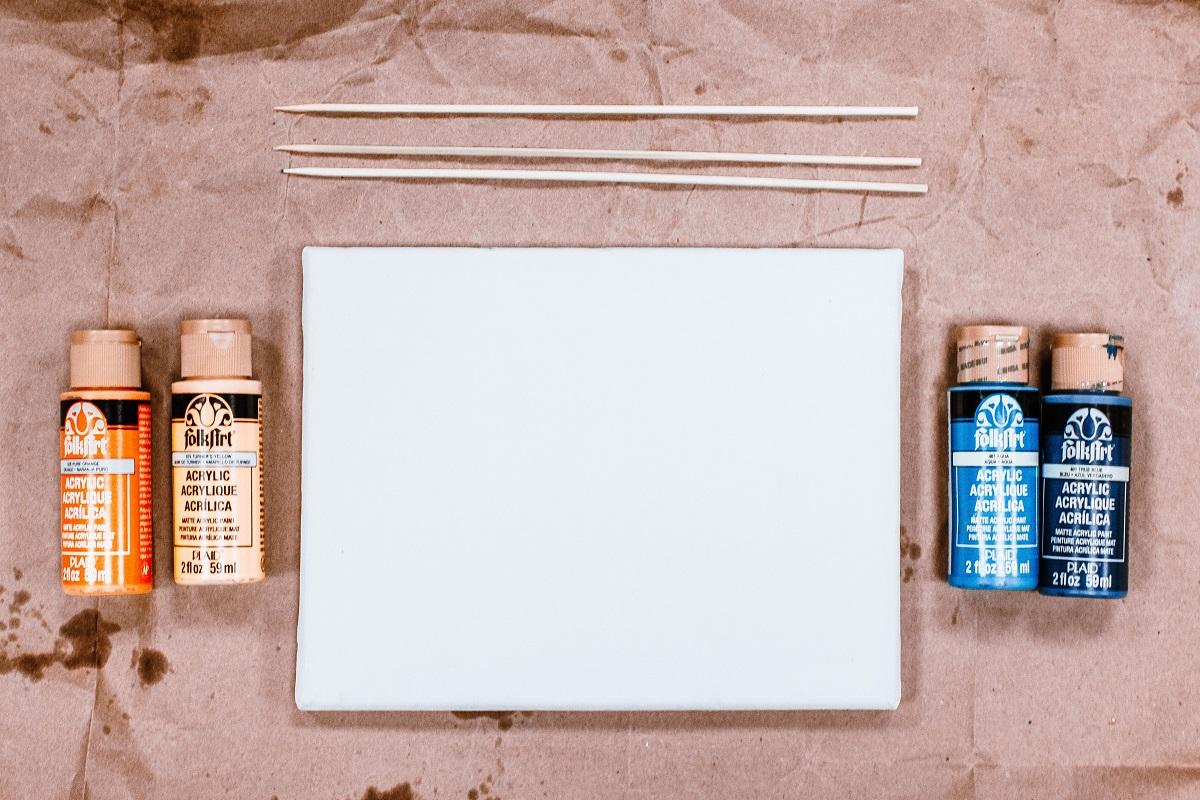For today's artists, there’s no dearth of painting mediums for expressing their ideas on canvas.
![What Is Acrylic Paint For? [Uses & Ideas] What Is Acrylic Paint For](https://homesthetics.net/wp-content/uploads/2022/06/What-Is-Acrylic-Paint-For-1.jpg)
One such medium is acrylic paints, which has attracted art enthusiasts owing to its intriguing composition and range of shades. Look around you or search the web— you’ll find a multitude of acrylic paintings by artists who can’t get enough of this exciting variety of paint.
So, if you’re yet to try it out for your paintings or have limited knowledge regarding its applications, now is the time to take the leap.
But we know there are many considerations to make and essential factors to be aware of if you wish to work with acrylic paints. So, we’ve tried to help you out by curating this comprehensive guide on the various ways to enhance your artwork using high grade acrylic paints.
Let’s find what is acrylic paint for artwork here together.
What Is Acrylic Paint For?

Before we move on to discuss the various applications of acrylic, such as whether acrylic paints can be used on metals or not, we’ll help you develop a clear idea about this paint type and other vital aspects associated with it.
Let’s get started.
About Acrylic Paint And Its Main Ingredients
Introduced in 1934, acrylic paint is formed primarily using three ingredients: an acrylic resin suspension, pigment particles, and water. The best part about this paint is that it possesses qualities of both watercolor and oil paints, which is why artists began applying it as an alternative to those in the 1950s.
Also, you can dilute it with water easily, which implies you can use it to create lighter shades for any specialized artwork. This paint can’t be regarded as a complex variety since the components mentioned above make up most of its composition. So, let’s briefly learn about the significance of each of them in the formulation:
1. Acrylic Pigments
These pigments are responsible for providing color to all acrylic paints and are generally obtained from a natural source. But you can get synthetic varieties of these pigments as well. These minute pigment particles are immersed in the paints and are not similar in any way to the surface that they’re used on. That’s why you’ll need other components when applying the pigments to your canvas.
2. Acrylic Binder
As the pigments won’t stick to any surface on their own, you’ll need something to ensure they stay on your canvas. And that’s where acrylic binders come into the picture. After the water has evaporated, the binder and acrylic polymer combine to form a coat that clings firmly to the surface or paper.
3. Water
In acrylic paints, the water actually works as a vehicle to transport the pigment and the binder to the area where you wish to add the paint. When combined with the acrylic binder, it creates an acrylic polymer emulsion. Upon evaporation of the water, the paint dries to a clear film of polymers containing colored pigment particles.
Other Components Of Acrylic Paint
Apart from the basic ingredients of acrylic paint, there is more to its composition. To ensure the pigments don’t float on the water surface, a paint dispersant is added to the formulation as it provides better consistency. Paint brands also often include other components to enhance the effectiveness of these paints.
Why Are They So Popular?
Back in the 70s and in successive periods, artists began to use acrylic paints extensively, and since then, they have only become more popular over time. In this section, we’ve discussed the main reasons behind this immense popularity.
1. Elastic and Flexible
This implies acrylic paints will contract and expand as temperatures fall and rise, without cracking or flaking in the artwork. And even after they’ve dried fully, they’ll remain equally flexible.
2. Non-Toxic And Non-Flammable
Standard acrylic paints don’t come with inferior-quality pigments or binders, which is why they aren’t flammable or toxic at all and don’t emit any kind of fumes. This makes sure that these paints are completely safe for kids and pets.
3. Fast Drying And Permanent
Want to know how long do acrylic paints take to dry? The short answer is: fast. But acrylics also keep the colors intact over time, especially if you are using artist-grade quality. Another great benefit, they’ll never turn yellow in the long term, which often happens with oil paints.
Remember that some cheaper acrylics might lose their saturation with time, though they will not fade entirely.
4. Highly Water-Soluble
The high water solubility of acrylic paints makes it easy to wash palettes and brushes, plus your hands using water and soap. That’s why you won’t need turpentine or paint thinners for the cleanup, unlike some other paints.
5. Water-Resistant Upon Drying
Last but not least, they become completely waterproof upon drying, so rest assured your finished acrylic painting won’t be affected if it accidentally comes in contact with water.
The Types Of Acrylic Paint
Acrylic paints are available to artists in a number of types, which actually signifies they come in different thicknesses. But the paint consistency is independent of its pigment content or quality. The difference lies in the binders applied in the paints — they might be semi-gloss, matte, or gloss.
Applying a gloss binder can make the paint transparent. On the other hand, matte and semi-gloss finishes are slightly milky and translucent when you lay down the paint.
1. Soft Body Paints
Akin to their name, these acrylic paints are very smooth and thin in terms of texture, almost like yogurt. They facilitate smooth application and are perfect for combining with different acrylic mediums like flow improvers, retarding mediums, and texture gels, to name a few.
2. Heavy Body Paints
These are the thickest and heaviest among all the types of acrylic paints and are also the most popular variety. Heavy body paints are similar to acrylics in that they retain brush strokes and marks and provide a feel of soft butter. Note that such paints also work well on rough canvases.
3. Fluid Paints
These paints are available in bottles rather than tubes and come with the consistency of double cream. They’re ideal for painting fine details, staining, and glazing and might even be applied using airbrushes or sprayed onto your canvas.
4. Acrylic Gouache
You shouldn’t confuse this variety with the regular gouache as they’re a lot different. Acrylic gouaches are efficient choices in case you wish to paint a large space with a single color. That’s why illustrators find these paints to be really useful for their projects. As they dry, they level out brush marks and dry to velvety matte finishes.
5. Spray Paints
By applying acrylic spray paints, you can cover larger areas with thin paint layers while also controlling the amount of paint to lay down. This lets you paint either fine lines of paint or a lot in one go. Note that this type can also be used efficiently with other acrylics.
6. Open Acrylic Paints
This is another variety resembling oil paint in that it dries slowly; hence you would be able to apply the same techniques as used for the latter type. Notably, some of these techniques include color blending on the canvas or surface and wet-on-wet paintings.
7. Interactive Acrylics
Up next is a unique type of acrylic paint that you can wet again once dried, though it dries up at the same pace as the other types. Thus, you can slow down the drying time of these paints just by adding a little bit of the unlocking solution.
Note here that unlocking solutions are specialized chemicals that can help you modify or retouch a dry painting as per your needs. You may apply this solution using a spray bottle or brush.
8. Acrylic Ink
Here’s another, more fluid variety of acrylic paint that’s used by grinding the pigment to a super-fine powder and suspending it in an emulsion. Note that this emulsion is just as viscous as water, which implies it can be used with pens, airbrushes, and normal brushes quite smoothly.
Also, acrylic ink colors are quite intense and ultimately provide a highly glossy look to an artwork.
Different Grades Of Acrylic Paint
The various acrylic paints can also be combined to provide artists with better control over their application. After all, they might want to use these paints in their own way. Such applications and techniques are quite vast, which is why different grades of acrylic paint can be created using its different types.
Student Acrylic Paints
This grade of paint contains binders in higher proportions than pigments, while mediums and fillers are also added to create more bulk. However, these ingredients might affect the saturation and opacity of the paints. Note that some may find them to be more chalky owing to the filler content.
Student grade paints are suited for those who prefer a more budget-friendly option, such as beginners or amateur artists.
Artist-Grade Paints
Artist-grade acrylics are prepared using more of the binder and many other components that help enhance their quality. A point worth noting is the low color shift of these paints, meaning that they are less likely to turn darker with time, unlike the cheaper varieties. Plus, the greater binder content makes them quite affordable.
Professional-Grade Paints
The professional-grade varieties undoubtedly have the highest quality and utilize superior pigments in their formulation. Note that even the other ingredients included are of the best quality, and the proportion of binder added is much lesser than the other paint grades.
The resultant paint is quite vibrant and offers numerous options to artists.
However, a point of caution is that they’re much more expensive than other grades of paint, though the price might vary from one brand to another. And based on the ingredients and pigments applied, the texture, opacity, drying time, and other qualities of professional-grade acrylics might vary.

Buying The Right Type Of Acrylic Paint
First, you should know that choosing a particular brand or type of acrylic paint depends on various factors, including your preferred style, techniques, and surfaces. There are also some general considerations, which are as follows:
1. Quality
The quality of paint you’ll need for your projects is a key factor, as it will determine how your artwork will ultimately turn out to be. First of all, it’s essential to consider how you want it to be — whether a low pigment content will suffice or you want the acrylic painting to be more vibrant.
The greater vibrancy and consistency of professional-grade paints make them suitable for seasoned artists who are looking to create masterpieces. Note that such paints will be easier to layer and blend, which implies they also offer greater versatility. Likewise, getting some student-grade and artist-grade paints will suffice if you’re a beginner in the field.
We’d recommend using artist-grade paints when you start creating paintings that you want to preserve in the long term.
Another alternative is to use the student-grade paints for just the earth colors, but make sure to use superior varieties for the more intense colors. On a side note, a few artists also use student colors for underpainting and apply professional-quality paints on top.
2. Viscosity
Viscosity can also be referred to as the thickness or consistency of acrylic paint. That’s why it’s important to figure out the consistency you’ll need for the project at hand. Side by side, you should be clear about your personal preferences in this regard.
If you want the brushstrokes to be retained in the artwork, it’s best to go for heavy body paints. On the other hand, the fluid varieties are thinner though they come with a similar pigment concentration. And in case you want consistency somewhere in between, you’ll also find different mediums to combine with the paint to yield the desired outcome.
3. Lightfastness
This quality tells you how well the pigment can resist fading on exposure to light. The varieties that fade gradually are often termed fugitive colors. Note that most acrylics have much higher permanence ratings compared to watercolor or oil paints.
While selecting the right paint for your projects, you should take into account some lightfastness standards. The ASTM International, formerly called American Society For Testing Materials, categorizes colors based on an assessment that simulates two decades of exposure to the gallery.
- ASTM I - Excellent permanence
- ASTM II - Efficient lightfastness
- ASTM III - Lightfastness not sufficient
Except for when you’re experimenting, I’d suggest using paints with very good or excellent lightfastness. Remember that the ASTM rating will be mentioned on the jar or tube containing the paints.
4. Brands
Certain brands might be better compared to others. However, with regard to the top-notch manufacturers in the business, it’s mostly about personal preferences.
5. Drying Times
While acrylic paints are loved for their ability to dry very quickly, this property becomes a hassle in case the paint on the palette or brush dries out before you’ve finished the artwork.
Additionally, if you’re willing to combine paint and create a blending effect, it’s more convenient if the paint remains wet for a longer time. This is possible with retarding mediums or by using interactive acrylics, a newer type containing retardants that we discussed earlier in our guide. Such paints and mediums can slow down the drying time to a couple of weeks.
Notably, open acrylic paints are also convenient for those willing to replicate the look of an oil painting with acrylics.
6. Container Type
Acrylic paints come in either jars or tubes, with the former option being more cost-effective as you get more paint with every purchase. However, the paint tubes are smaller and easier to carry.
Even the consistency of the two varieties differs slightly — while tubes contain paste-like paints, those coming in jars are thicker though they will flatten when kept on the color palette.
A Guide On Using Acrylic Paints
1. Choosing The Colors You’ll Need
As there’s a vast range of acrylic colors to choose from, any beginner may find it difficult to figure out those they need. Additionally, some colors are costlier than others, irrespective of their grade. That’s because a few pigments are more difficult to obtain compared to others.
But in most cases, you’ll find that earth hues are the most cost-effective options, while cadmium hues are the costliest. In case you’ve just started out with acrylic colors, we’d recommend going for a set of acrylic paints or only the following colors:
- Burnt Sienna
- Alizarin Crimson
- Cadmium Red
- Cadmium Orange
- Dioxazine Purple
- Cadmium Yellow
- Phthalo Green
- Phthalo Blue
- Titanium White
- Ivory Black
2. Selecting The Tools
Unlike the paraphernalia required for creating oil paintings, you’ll need just a couple of budget-friendly tools for working with acrylics, which are as follows:
- Brushes
The most suitable brushes for acrylics are synthetic as they work well with such paints. Notably, you’ll need two round and two flat brushes for painting with acrylics, a large and a small one for each type.
- Acrylic Paint Set
Make sure that the set you’re getting contains all the shades of paint that we’ve listed above.
- Palette Knife
You’ll need a tool to mix the paints properly, and a palette knife will be most suitable for the purpose. That’s because it won’t get clogged with paint, which might happen with brushes and damage their bristles.
- The Painting Surface
Your painting surface should be clean and free of wax or oil, as well as small particles and dust that might stick to it.
- Plate Or Palette
You’ll have to mix the color or put down color dabs on such an additional surface.
- Water
You will have to rinse the brushes at certain points during your painting sessions. So, make sure to keep a cup of water by your side.
3. Some Essentials Of The Process
Once you’ve gathered all the tools and equipment, you can start with an acrylic painting project. But in case you’re a beginner, it might take time to get accustomed to how quickly acrylic paints dry.
Fortunately, as we've discussed earlier, you can alter the drying time for some specialized acrylic paints. Make sure to extend the time to as long as you require by adding the retarding medium to the paint.
Increasing the drying time will let you work on the finer details in your painting for longer. You’ll also be able to blend various colors on the palette or canvas while the colors are still wet.
4. The Finishing Touch
Some artists might want to varnish their painting once it has dried completely. Note that varnishing will seal an artwork and make sure that the colors retain their sheen.
Acrylic varnishes are the fastest drying variety and are made using polymer resins dissolved in an emulsion. Some solvent-based varnishes are also available, though they dry relatively slower.
Irrespective of the chosen varnish, you should ensure the painting is dust-free and clean before varnishing it. And once it’s completely dry, you will be able to wipe it down using a damp cloth before you begin the varnishing. On a side note, there are specialized brushes that you can use to carry out the varnishing and make sure you layer the varnish uniformly.
A semi-dry varnish can feel tacky, so propping up the artwork against the wall and facing it inwards will ensure small particles and dust don’t get stuck onto the surface.

What Is Acrylic Paint For Frequently Asked Questions ?
Can you use acrylic paint on surfaces other than canvas?
Yes, acrylic paints are suitable for painting on other surfaces, including cardboard, paper, glass, metal, wood, leather, and fabric. You’ll just need to clean the surface and remove oil, wax, and dust from wherever possible.
Since acrylic paints dry quickly, are they only fit for painting wet on dry?
No, rather, you can use acrylic paints for impasto paintings which are actually thin paint layers that add texture. You should work fast, though, since the paint will dry quickly. Alternatively, the drying period can be slowed down, or open acrylics can be used.
What is the average shelf life of acrylic paints?
Unused water-based and latex paints can last up to 10 years, while oil-based and alkyd paints have a longer shelf life of up to 15 years. Note here that since unopened paints haven’t been exposed to the surroundings, they will have semi-solids and liquids in the same ratio, though these components might separate over time.

What Is Acrylic Paint For Final Thoughts
That was all about the different applications of acrylic paints and other essentials of using them the right way for your paintings.
Hopefully, you enjoyed this colorful journey just as we enjoyed researching all about this interesting variety of paint. Our guide will help you apply the different types and grades of acrylic paints to bring the desired effects to your artwork. So, go ahead and create your dream painting today!
But before we sign off, we’d like to remind you about an important requirement for working with any type of paint. Working knowledge of color theory, as well as the result of mixing different colors, is essential if you wish to apply a variety of acrylic colors to your paintings. So, make it a point to spend some time on this.
We’ll wrap things up for now. See you soon with another intriguing guide on painting. Take care!
